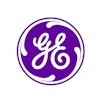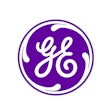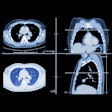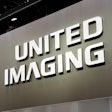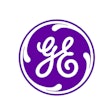Radiation dose and image quality performance measures for CT imaging accepted by the U.S. Centers for Medicare and Medicaid Services (CMS) in 2023 are "ambiguous" and need to be reconsidered, according to the American Association of Physicists in Medicine (AAPM).
Last month, the association convened what it called "an intersocietal panel of CT experts" -- which included representatives from academia, industry, and professional societies -- to assess a CT data collection/reporting measure that took effect in January in the quality-based payment programs of CMS (payments will begin to be affected by the measure in 2027). The new quality measure was adopted by the CMS in an effort to discourage excessive radiation dose while preserving image quality.
The panel produced a paper that was published in the American Journal of Roentgenology in February that identified 20 "issues and ambiguities" with the measure. These ambiguities include "the measure's specifications, stemming from metrology concerns, unconventional terminology, and inconsistencies with practice standards or norms, while relating to themes of applicability, categories and metrics, informatics, performance expectations, and meta considerations," according to the team of authors led by first author Jered Wells, PhD, and senior author Ehsan Samei, PhD, both of Duke Health.
"Transparency and stakeholder engagement are essential for effective quality initiatives in medicine," said Mahadevappa Mahesh, PhD, president of AAPM, in a statement that referred to the paper. "We wrote this … to call attention to issues and ambiguities with the CMS measure, and we look forward to working with CMS to address these issues and continue the culture of quality and safety that has developed in CT imaging over the past two decades."
Mahadevappa Mahesh, PhD, warns of potential "unintended consequences" of the CT measure.
The CT quality measure was developed by the University of California, San Francisco, and its "steward" -- that is the entity that interacts with CMS in situations like this -- is Alara Imaging.
"The measure score is expressed as the percentage of qualifying studies that exceed predetermined thresholds indicating inadequate image quality (based on image noise) or excessive radiation dose," Wells and colleagues wrote, noting that "the measure has been incorporated into the major CMS quality-based payment programs, impacting hospitals and clinician payments."
What's tricky, according to the researchers, is the contradictory nature of the measure's specifications. They said that "all commercial uses or requests for modification must be approved by Alara Imaging, and are subject to a license at the discretion of Alara Imaging"-- even though its NSF application materials assert that "the specifications of the measure (e.g., code lists, risk model coefficients, radiation dose and noise thresholds, and required algorithms) are in the public domain."
"This dichotomy raises critical questions about the balance between promoting open access to essential healthcare quality improvement methodologies and the steward’s proprietary interests," the authors wrote, and "the mandated reliance on incompletely disclosed methods for quality improvement and reporting raises ethical concerns."
In addition to including medical physicists from Duke Health, the Mayo Clinic, and the University of California, Los Angeles, the paper's authors include industry representatives from Canon Medical Systems USA, radiation dose tracking software developer Imalogix, Qaelum, and Siemens Healthineers. Of note, Alara and Qaelum inked a technical partnership in 2024.
The CMS clarified in a document released in October 2024 that "providers are not required to use the Alara Imaging software. They may choose any software that performs the necessary functions to generate the same standardized data elements necessary to calculate the measure consistent with the measure's specifications.")
In an accompanying editorial, Stephanie Leon, PhD, of the University of Florida in Gainesville, noted that "quality-based payment programs will be impacted starting in January 2027," which means that "the radiology community has two years to figure this out. This article is an important first step that should be studied by all of us affected."
Another editorial written by Kishore Rajendran, PhD, of the Mayo Clinic in Rochester, MN, and chair of the working group on the physics of quantitative imaging at AAPM, called for transparency.
"A nonproprietary, community-based approach is imperative to ensure full transparency, achieve consensus among CT stakeholders, and provide reliable clinical diagnoses at the lowest radiation dose possible," he wrote.
The AAPM team said it hopes its feedback about the CT imaging quality measure CMS has adopted will rally the expertise of "the entire imaging community -- physicians, physicists, technologists, regulators, and industry – " to help "develop quality improvement initiatives that will keep radiation doses as low as possible while maintaining the quality of medically essential CT imaging," according to the association.
"We're confident that we can get this right by working together," Mahesh said.
AuntMinnie.com · AAPM President discusses CMS CT reporting measure
The complete AJR paper can be found here.
Alara co-founder Rebecca Smith-Bindman, MD, of the University of San Francisco, defended the existing measure in a statement to AuntMinnie.com.
"Some have raised concerns about the Excessive Radiation Dose Measure but neglected to acknowledge that it was developed in collaboration with a technical expert panel which included medical physicists, radiologists, quality measure developers, and patient representatives," Smith-Bindman said. "Prior to its adoption by CMS, the measure underwent rigorous scientific review by the National Quality Forum (NQF) and CMS itself as a part of its Measures Application Partnership (MAP). Both of these organizations provided exceptionally strong endorsements of the measure based on the demonstrated validity and reliability of prospectively collected results of more than 45,000 CT scans performed in 17 health systems. Many of the concerns raised in the statement were … addressed during the review processes undertaken by NQF and CMS."
Smith-Bindman also noted that CMS is in the process of implementing the first version of the measure, and that "the measure developer and steward are committed to supporting CMS's efforts to evaluate the accuracy of the reported data and to recommending improvements in the specifications as needed to ensure accuracy and alignment, with the goal of reducing excessive radiation doses while preserving sufficient image quality for radiologists' interpretations."'
Reducing unnecessarily high radiation doses will prevent cancers and save lives, she stressed.
"The Excessive Radiation Dose Measure provides a meaningful way to address this significant environmental risk factor," she told AuntMinnie.com.


